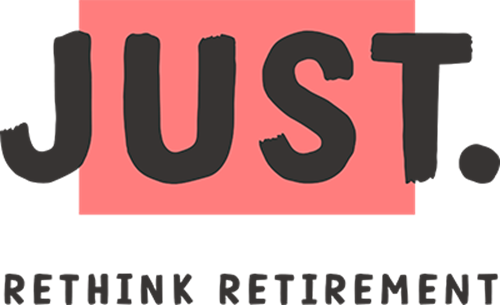Medical Aid
After retiring, many South Africans face a drop in income, making it challenging to maintain comprehensive medical aid coverage.
Try to avoid late joiner fees
Late joiner fees are really important to consider when looking to join a medical aid scheme after age 35, or if you have been without medical aid cover for an extended period. These fees are designed to discourage you from delaying enrolment in a medical aid scheme and are charged in addition to regular monthly premiums.
The calculation of late joiner fees is based on two factors:
- The age of an individual at the time of joining
- The length of time an individual has been without medical aid cover
The longer the period without cover and the older the individual, the higher the penalty. In addition, late joiner fees are not a once-off charge; instead, they are added to your monthly premium for as long as you remain a member of your chosen medical aid scheme.
However, there are some exceptions to late joiner fees. If you have been without medical aid cover for less than 90 days or are in the process of moving from one medical aid scheme to another, you may not be required to pay the late joiner fee.
It's essential for you to carefully consider the implications of late joiner fees when choosing a medical aid scheme after retiring. If you are a late joiner, it is best to make sure your income plan allows for the higher fees you'll need to pay.
Long-term care
Long-term care needs should also be a key consideration in retirement planning. As you age, the possibility of requiring long-term care becomes more likely – whether in-home care, assisted living facilities, or nursing homes.
Long-term care can be expensive, and without proper planning, it can deplete retirement savings quickly. This is why, when constructing your retirement plan, you should consider making provisions to cover these big expenses. This may involve purchasing long-term care insurance or setting aside dedicated funds for long-term care expenses.
Planning ahead can provide peace of mind and alleviate the financial burden on both you and your family in the event of long-term care requirements.
Here is a list of other essential aspects to consider when assessing healthcare costs in retirement:
- Waiting periods are standard for all medical aid members, including a general three-month waiting period and a 12-month waiting period for pre-existing conditions.
- Consider essential medical aid benefits for retirement, including a good hospital component, comprehensive chronic condition coverage, and specialised radiology benefits.
- Affordable comprehensive plans are ideal for retirees over 60.
- Lower-cost options for medical aid after retirement include income-based plans and hospital plans.
- Gap cover can extend your existing medical aid benefits by covering the gaps between medical aid payouts and private healthcare costs.
- Consult a medical aid broker for informed advice and assistance in choosing, or changing to a medical aid plan that suits your needs and budget after retirement.
The ‘two-pot system’: new rules for how much you can cash out
The two-pot retirement system is a new approach to managing retirement savings, set to begin on 1 March 2024. It means that South Africans will have access to one-third of their retirement savings throughout their working years, while two-thirds will only be accessible upon retirement.
The goal is to discourage people from cashing out their retirement savings when they resign, and to prevent workers from resigning solely to access their funds.
There are a few key points to understand about the new two-pot system and its impact on retirement savings:
- Starting from March 2024, retirement fund and retirement annuity members will only be allowed to withdraw up to R25,000 of their existing savings before reaching the minimum retirement age.
- This withdrawal is referred to as ‘seed capital’ and will be calculated as 10% of the benefit accumulated in the 'vested component' as at 29 February 2024, limited to R25,000, whichever is less.
- This legislation is designed to encourage members to only use the withdrawal option as a last resort and to preserve their savings for retirement. This means it's essential for you to carefully consider the implications of accessing your funds before retirement.
In addition, the legislation excludes legacy retirement annuity funds, which are funds entered into before 1 January 2022 that have certain characteristics.
The two-pot system will follow a phased implementation process. The first phase deals with the two-pot retirement system, while the second phase will address allowances for retrenched workers who have no alternative income.
Overall, the two-pot retirement system aims to promote greater retirement savings and discourage early withdrawals – ultimately providing retirees with more financial security during their retirement years.
Understanding the South African pension system
The South African pension and retirement system is a vital aspect of the country's social security framework, providing financial support and security to retirees and older individuals.
The system comprises various components, including workplace pension funds, government social grants, and retirement annuities.
Overall, having a comprehensive understanding of the South African pension system empowers individuals to plan for their retirement and make the most of the benefits available to them, ensuring financial stability and security during their later years.
Take time to understand your pension fund
Many employed individuals contribute to workplace pension funds, which are employer-sponsored retirement savings plans. These funds allow employees to build up savings throughout their working years, and upon retirement, they can access these funds to support their post-retirement lifestyle.
Government social grants
The South African Social Security Agency (SASSA) administers social grants to provide financial assistance to eligible individuals, particularly older persons with limited means. One such grant is the Older Persons Grant, which aims to alleviate poverty among the elderly population.
To qualify for this grant, applicants must be South African citizens 60 years or older and must meet specific income and asset criteria.
Monitoring and reviewing your retirement plan
Regularly reviewing and updating your retirement plan is of utmost importance to ensure its effectiveness in meeting your financial goals and needs. As life circumstances, goals, and market conditions change, your retirement plan must evolve to stay aligned with your current situation. A professional, qualified financial adviser can help you on this journey.
Adjust for changing circumstances, goals, and market conditions
Life is dynamic, and various factors can impact your retirement plan over time. Changes in employment, family situations, health, and economic conditions can all influence your financial outlook.
It's essential to reevaluate your retirement plan periodically (preferably with a financial adviser) to account for these shifts and make necessary adjustments.
Seeking professional guidance
While managing your retirement plan on your own is possible, seeking professional guidance from financial advisers or retirement planning experts can add significant value. These professionals have the knowledge and expertise to assess your current financial situation, analyse your goals, and provide personalised recommendations to optimise your retirement plan.




